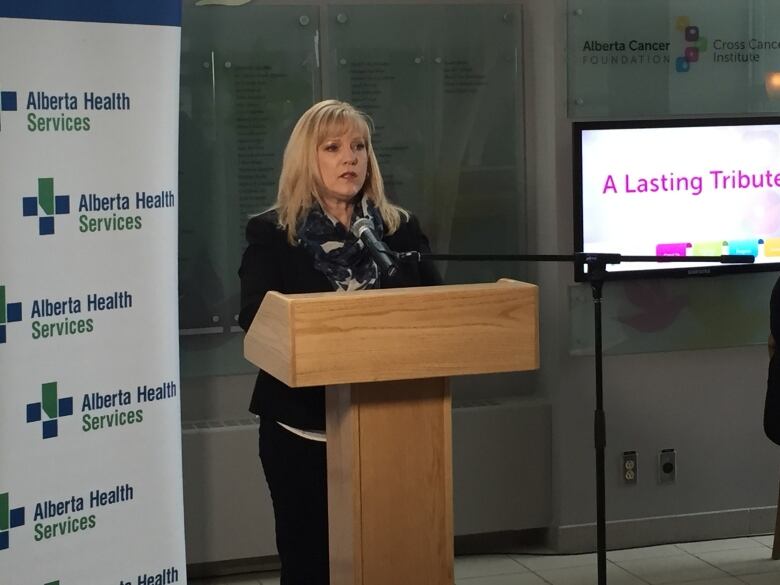Study finds almost half of all cancers linked to preventable factors
More than 6,700 cancer cases in Alberta can be avoided per year, researchers say

A new study has confirmed what health professionals have suspected for some time: preventable factors likesmoking cigarettes, not being active enough, unhealthy eating, excess body weight and alcohol allincrease your risks of getting cancer.
The study has determined about 45 per cent of cancer cases in Alberta are linked to these modifiable and environmental factors.

The study findings were announced Thursday in Edmonton, on World Cancer Day.
"This is very important for cancer prevention programs, Christine Friedenreich, researcher andco-author of the study, said. "We need to have a baseline where we can say we now know that 'x' percentage of cancers are caused by these different exposures."
Friedenreich said that information can then be used in cancer prevention programs to target those exposures, and reduce the actual number of people who have those cancers.
She said the findings are not surprising.
"We knew that the associations were strong, we knew that the literature was there but we'd just never done it for Alberta," Friedenreich said.
Help guide cancer prevention
There are many people in Alberta interested in preventing cancer andin trying to reduce risk, said Laura McDougall, Director of the Alberta Cancer Prevention Legacy Fund.
"We've all been touched by cancer in one way or another," McDougall said.
With this study information, she said prevention programs can be tailored for the biggest impact, withefforts concentrated on what makes the most sense McDougallcitesthe north zone of Alberta Health Services where cancer rates are a bithigher and the challenges are greater. A plan can be developed for the entire region and co-ordinated with agencies in the community, she said.
"When we didn't have this information it was a little bit harder to engage people and really inspire people about how much really can be done," McDougall said.
Study participant shares story
Laurilee Shaw began participating in the study in January 2011 and stayedwith the program for one year. At the time, she didn't know the study had to do with cancer prevention, only that there was an exercise program and trainers. She thought this would help her get fit and stay motivated to exercise.
Shaw said she gained a lot of endurance and became physically stronger over the course of the program.
"The more I worked out the more desire I had to be as healthy as I could be," she said.
At the time whenShaw finished her year with the study, her brother became ill and in need of a stem cell transplant. She and another sibling were DNA matches. Shaw said because of her good health, she was elected as the one to make the stem cell donation.
She said she suffered none of the possible side effects from the procedure, and credits her good health for that.Her brother has since made a total recovery.

Next step
Available online,Albertans can view new data on a specific cancer type and find information on the lifestyle and environmental factors that are linked to it. This will soon be something that will be available across Canada. In November 2014, the researchers of this study received a four-year grant worth $750,000from the Canadian Cancer Society Research Institute to expand their study nationally, and estimate the relationship between these same risk factors and cancer for each province in Canada.
They will estimate how cancer rates will be reduced by changing exposures to these risk factors until2045.












_(720p).jpg)


 OFFICIAL HD MUSIC VIDEO.jpg)
.jpg)



























































































